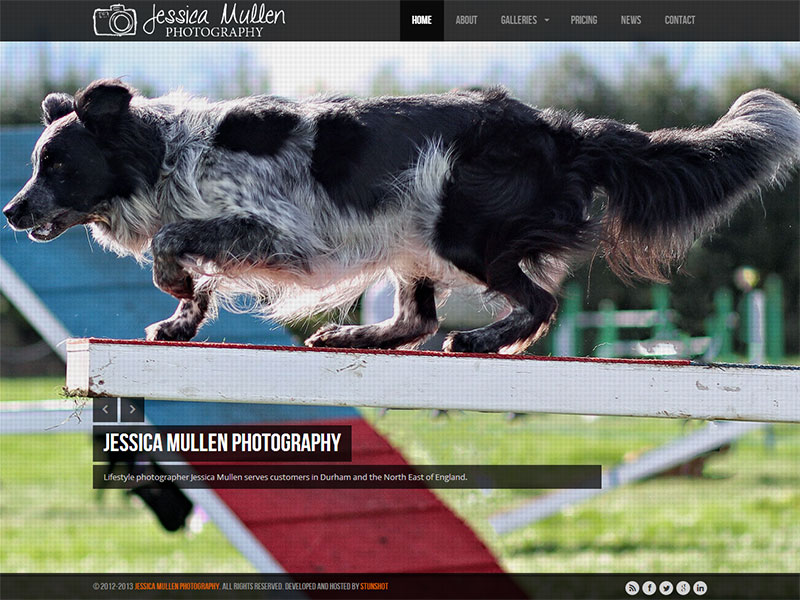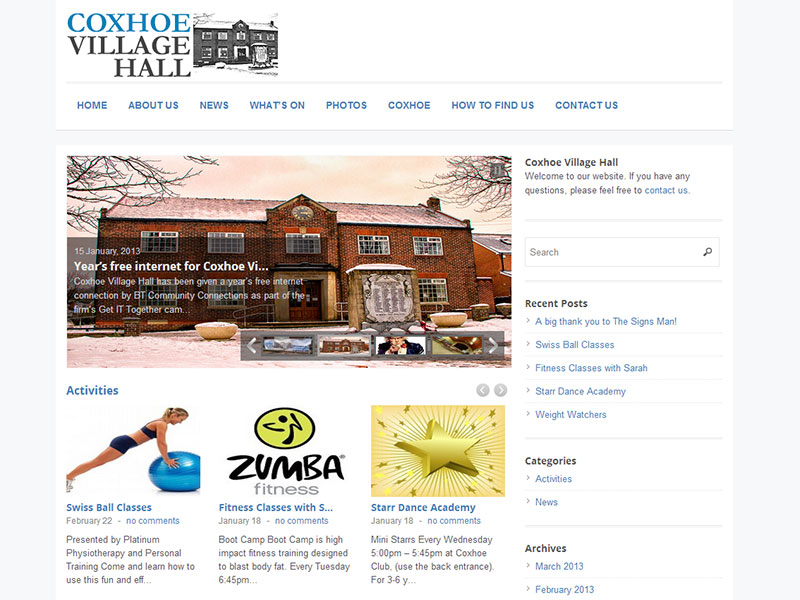Website design and web application development at competitive rates to suit any budget
We specialise in producing highly complex, database-driven, dynamic web solutions. However, we have also developed many simple, "brochure-style" websites for a number of individuals and small businesses - no job is too big or too small. You can be sure that whatever your budget and requirements, we will be able to offer an appropriate solution for you.
We take advantage of many different technologies in order to accomplish the challenges set by our clients. Over 90% of our developments are built using PHP and MySQL, although we are well placed to employ any technology required. Some of our recent work has included the use of XML, Java, Perl and SMS messaging.
We believe the only way to run a business is to put the customer first. We always try to exceed our clients' expectations and are only satisfied at the end of a project when the client confirms they are delighted with the finished product.
We would love to help you and your business, whether it's simply a case of generating a web presence by launching your first website, or transferring your current paper-based systems to a bespoke online system.
If you think we may be able to add value to your business, please don't hesitate to contact us. We will be more than happy to discuss your requirements and provide a free, no obligation quote.
We look forward to working with you!

Lifestyle photographer Jessica Mullen serves customers in Durham and the North East of England.

Coxhoe Village Hall is an important communty hub in the village of Coxhoe in County Durham.
Our key expertise is in creating dynamic, database-driven websites and browser-based web applications using PHP and MySQL. However, we employ a broad range of technologies in order to develop appropriate solutions that meet the needs of our clients. Our main skills include:
As you can see, we have a large skillset. We are well positioned to take advantage of new technologies and can very quickly learn new skills whenever required.
Web accessibility refers to the practice of making websites usable by people of all abilities and disabilities. When sites are correctly designed, developed and edited, all users can have equal access to information and functionality.
 For example, when a site is coded with semantically meaningful HTML, with textual equivalents provided for images and with links named meaningfully, this helps blind users using text-to-speech software and/or text-to-Braille hardware. When text and images are large and/or enlargable, it is easier for users with poor sight to read and understand the content. When links are underlined (or otherwise differentiated) as well as coloured, this ensures that color blind users will be able to notice them. When clickable links and areas are large, this helps users who cannot control a mouse with precision. When pages are coded so that users can navigate by means of the keyboard alone, or a single switch access device alone, this helps users who cannot use a mouse or even a standard keyboard.
For example, when a site is coded with semantically meaningful HTML, with textual equivalents provided for images and with links named meaningfully, this helps blind users using text-to-speech software and/or text-to-Braille hardware. When text and images are large and/or enlargable, it is easier for users with poor sight to read and understand the content. When links are underlined (or otherwise differentiated) as well as coloured, this ensures that color blind users will be able to notice them. When clickable links and areas are large, this helps users who cannot control a mouse with precision. When pages are coded so that users can navigate by means of the keyboard alone, or a single switch access device alone, this helps users who cannot use a mouse or even a standard keyboard.
When sites are correctly built and maintained, all of these users can be accommodated while not impacting on the usability of the site for non-disabled users.
The needs that accessibility aims to address include:
Individuals living with a disability use assistive technologies such as the following to enable and assist web browsing:
In 1999 the Web Accessibility Initiative, a project by the World Wide Web Consortium (W3C), published the Web Content Accessibility Guidelines (WCAG) 1.0. In recent years, these have been widely accepted as the definitive guidelines on how to create accessible websites.
On 11 December 2008, the WAI released the WCAG 2.0 as a Recommendation. WCAG 2.0 aims to be up to date and more technology neutral.
In the UK, the Disability Discrimination Act 1995 (DDA) does not refer explicitly to website accessibility, but makes it illegal to discriminate against people with disabilities. The DDA applies to anyone providing a service: public, private and voluntary sectors. The "Code of Practice: Rights of Access - Goods, Facilities, Services and Premises" document published by the government's Disability Rights Commission to accompany the Act does refer explicitly to websites as one of the "services to the public" that should be considered covered by the Act.
All our web development projects are undertaken with accessibility in mind. We work to the WAI-WCAG 2.0 and endeavour to achieve at least level AA conformance.
If you already have your own website, we can perform a web accessibility audit to identify any accessibility problems that may exist. We can then provide advice and guidance on the steps that need to be taken to correct any problems uncovered.
 Stunshot offers a range of online payment solutions from PayPal to suit the needs of your business. Each enables you to receive payment from credit and debit cards, bank transfers and PayPal balances.
Stunshot offers a range of online payment solutions from PayPal to suit the needs of your business. Each enables you to receive payment from credit and debit cards, bank transfers and PayPal balances.
PayPal's Website Payments Standard is an easy and secure way to receive payments online. Getting started is easy and you can add a payment button in just a few minutes. You can receive payments from all major debit and credit cards, as well as bank transfers and payments from a PayPal balance.
PayPal Express Checkout enables customers to checkout in just three clicks. You can receive payments from all major debit and credit cards, as well as bank transfers and payments from a PayPal balance. This can be used as a sole solution or as an additional payment option in your checkout.
Website Payments Pro gives you all the benefits of a merchant account and gateway, plus PayPal Express Checkout and Virtual Terminal - all through a single payment relationship. Accept payments directly on your website or via phone, fax, and email. You can receive payments from all major debit and credit cards, as well as bank transfers and payments from a PayPal balance.
Virtual Terminal is simply an online version of the traditional credit card swipe machine. Accept payments by phone, fax and mail with PayPal Virtual Terminal. You can receive payments from all major debit and credit cards, as well as bank transfers and payments from a PayPal balance.
PayPal's Email Payments is a fast and secure way to invoice or request payment from your customers. No website or integration is required---all you need is an email address. You can receive payments from all major debit and credit cards, as well as bank transfers and payments from a PayPal balance.
Copyright © 2002-2026 Stunshot · All rights reserved
Terms and Conditions · Privacy Policy · Service Level Agreement · Sitemap